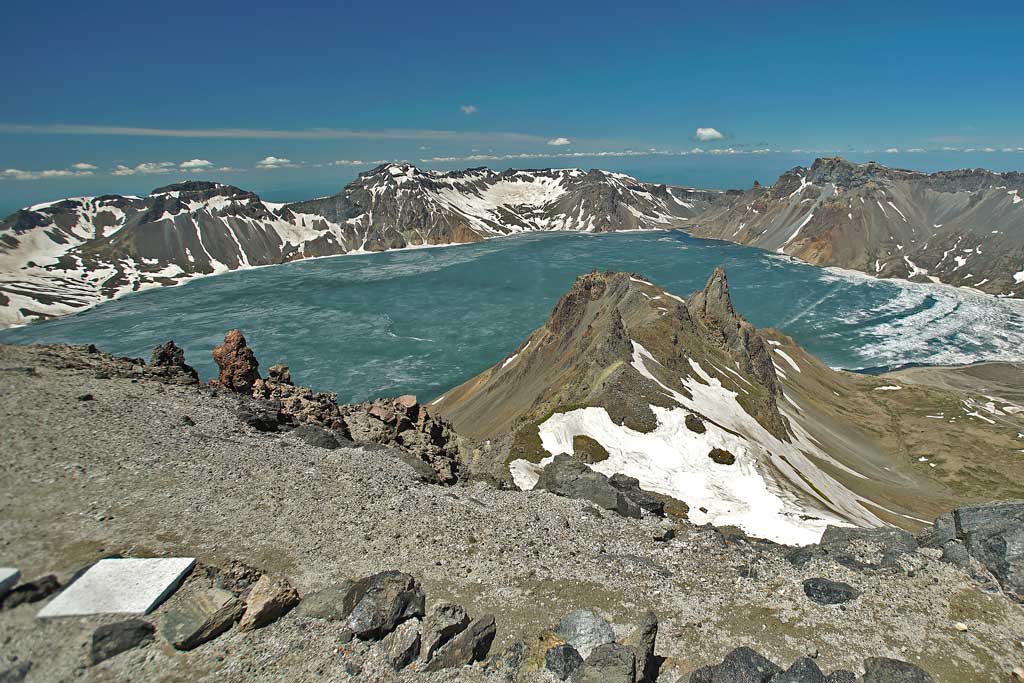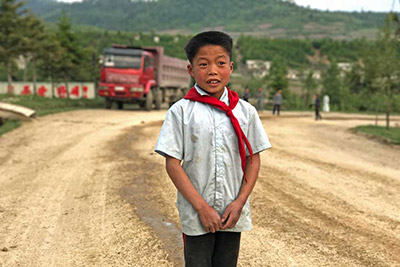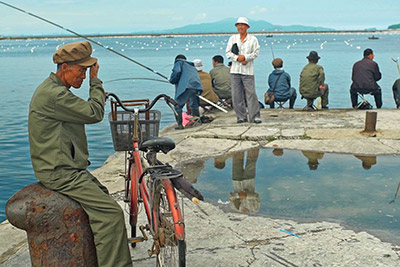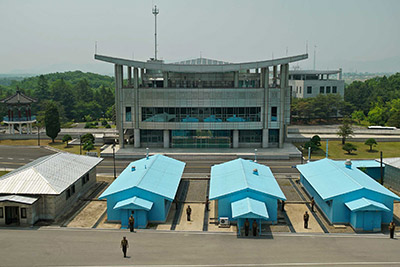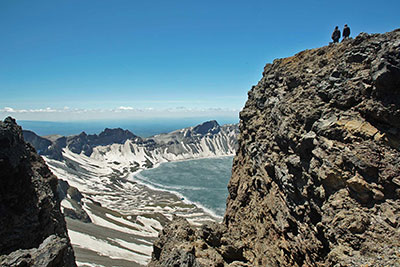Secret State A journey into the heart of North Korea
North Korea. Constantly ready for war. Holding a nuclear sword over the US and its allies, threatening to lash out at any time.
Life here is a mystery to most of the world.
CNN’s Will Ripley, Tim Schwarz and Justin Robertson visited North Korea in June and spent 15 days there. Despite being constantly under the watchful eye of government minders, they got an unprecedented level of access to this secretive state, beyond the bright lights of Pyongyang, and into the North Korean hinterland.
They spoke to people from all walks of life, learning more about what makes this country tick, the reason for its deep hatred of the US, and just why people who live under an authoritarian regime claim to adore the Kim family.
This is Ripley’s account of their journey into the heart of the hermit nation.

CH 01.
Children of the DPRK
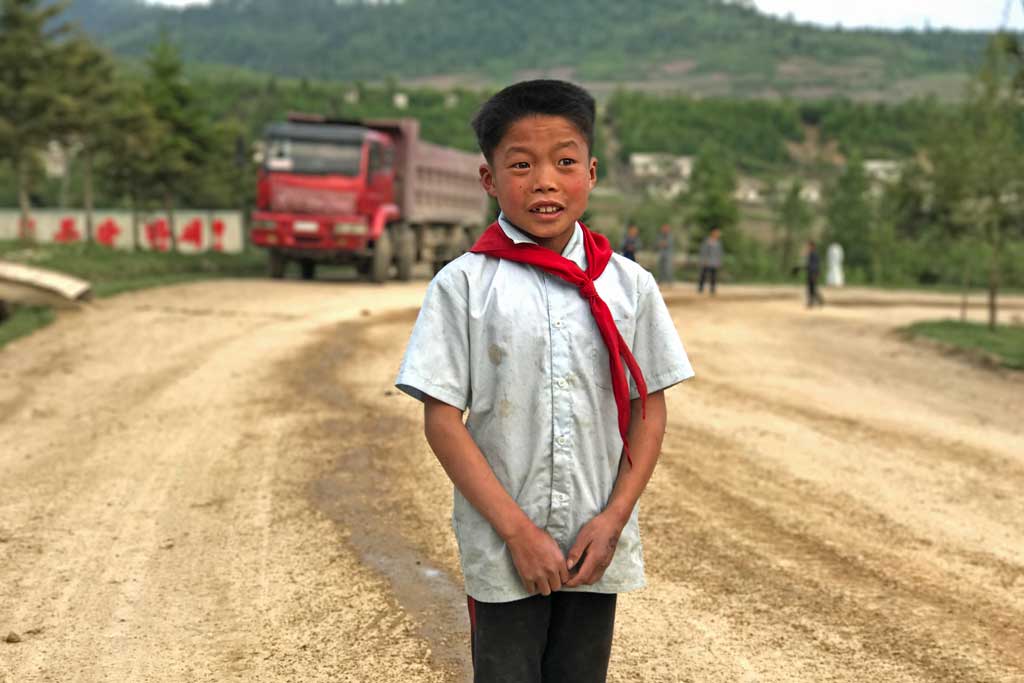
Unlike western teens, these youngsters aren’t just playing games. Many of them will spend their early adult years in the Korean People’s Army.
Life has not been the same since the Korean peninsula was divided between the communist Soviet-allied North and democratic US-supported South after World War II. The North Koreans’ loathing of Americans stems from the Korean War in the 1950s, a brutal three-year conflict that claimed the lives of around 3 million Koreans — mostly civilians.
North Korea teaches its people that America started the war, contradicting western historians who say it was the other way around.
The players’ favourite part of the game? Killing enemies. And who are the enemies? Americans.
The boy tells me he and his friend want to join the army one day, to fight the “sworn American enemy.”
“Because they forcibly invaded us, slaughtered our people…” he begins.
“Buried them alive,” his friend interjects.
“Buried them alive and killed them,” the first boy continues, not missing a beat.
I ask them if they would shoot me if I told them I’m American, and get a quick, unanimous ‘yes’ in response.
They then temper their enthusiasm somewhat, saying they’ll see if I’m good or bad. I promise I’m a good American. They say they won’t shoot me after all.
This is the paradox of North Korea — smiling, friendly and polite young people who tell me how much they hate my country.
In many ways, the North Korean youngsters are similar to American kids. They love games and sports. But, when I speak to some high schoolers playing beach volleyball, certain phrases and themes repeat themselves when I speak to them about America.
Phrases like ‘sworn enemy’ or ‘hostile country’. I wonder — do they really feel this way? Do they even know anything about the US?
High schoolers horse around at the beach in Wonsan.
The truth is, all these children know is government propaganda teaching fierce hatred of the US, and loyalty to the Kim family. Statues and photos of the Kims are everywhere. They’re a constant presence on state media.
There are about 5 million children under 14 in North Korea. They’re part of a collective society in which teamwork, not individual achievement, trumps all. This teamwork is needed for school classes to win a coveted two-week spot at the Songdowon International Children’s Camp — considered the best in the country.
The Songdowon International Children’s Camp is considered the best in North Korea. Students nationwide vie for a chance to win a coveted spot here.
The first thing we see when we get to the camp is a statue of happy children surrounding the country’s two late leaders, Kim Il Sung and his son, Kim Jong Il. Like everywhere else in North Korea, life revolves around the leaders.
A birthday party is underway, and we watch students singing the praises of their supreme leader.
Chae Jin Song, the birthday boy, calls Kim Jong Un the “father who returns all the love of real parents”. I ask him why he considers Kim like his father, and he tells me it’s because Kim gives them love even real parents can’t give.
“I declare I will become a true member of the children’s union, who studies better in order to repay the love of respected leader Kim Jong Un,” he vows.
These young people are the future of North Korea. An entire generation, brought up to worship their supreme leader.
No skepticism. No dissent. No questions.
Only loyalty, for life.
CH 02.
Wonsan, a city of seafood and missiles
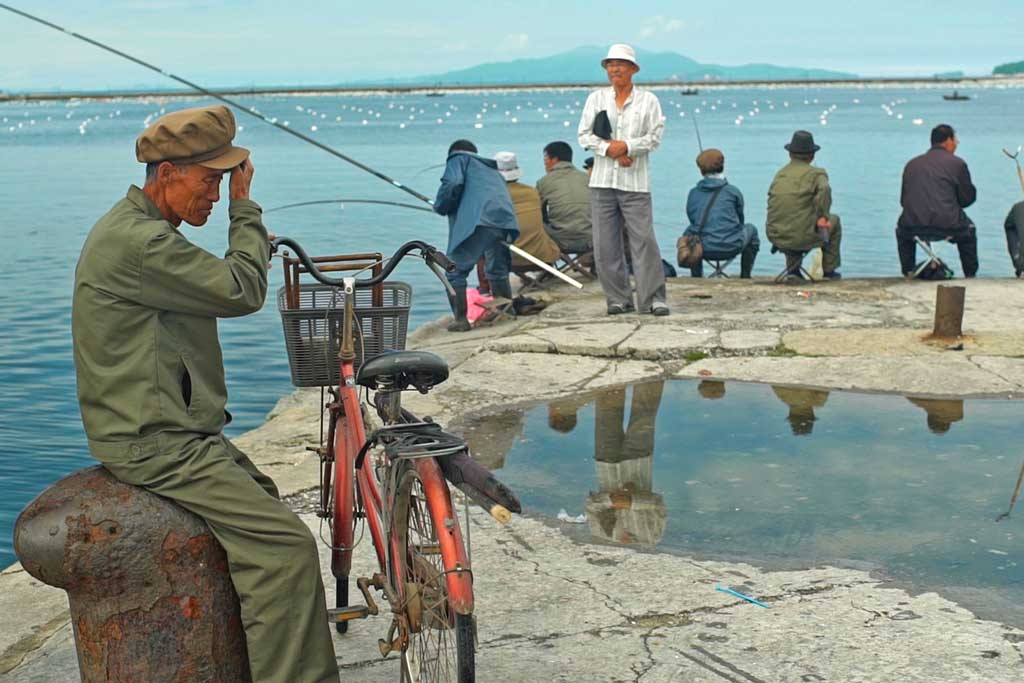
There’s one word to describe the 125-mile journey east from Pyongyang, the country’s capital, to Wonsan: bumpy.
It takes almost five hours, with numerous stops. One lasts 20 minutes — because there’s major roadwork ahead.
Only small cars can pass, and we’re in a big van. It takes some dickering between our minders and the police officer manning the post, a few phone calls and a promise to drive slowly and carefully past construction crews before we’re allowed through.
We see men and women laboring in dark, badly ventilated tunnels as we trundle past.
The landscape is striking. Majestic mountains, thick forests and the dots of tiny towns in the distance. I wonder what life is like for people in those small, rural communities — places outsiders, especially journalists, are kept far away from.
Wonsan is a mid-sized industrial city, the 5th largest in the country. It’s popular among tourists and known for its fishing and seafood.
Residents in the coastal city of Wonsan spend a quiet afternoon fishing. Wonsan is known for its seafood – and for being one of North Korea’s main missile launch sites.
It’s also one of North Korea’s main missile launch sites.
The country’s missile program is advancing fast, defying efforts by the US and its allies to curb them. North Korea now has the dreaded intercontinental ballistic missile — possibly nuclear capable — putting the US mainland within striking range for the first time ever.
The nation’s founder, Kim Il Sung, oversaw the first Scud missile launch in the 1980s. His son and successor, Kim Jong Il, launched more than a dozen missiles during his 17-year rule.
But Kim Jong Un has taken this to a new level since taking power in 2011, launching satellites, ordering nuclear tests and firing missiles with frightening regularity.
This has taken North Korea dangerously close to the brink of war with the US, whose reactions to the tests have become increasingly belligerent under the Donald Trump administration.
Yet, tests continue. Why? Propaganda. Each launch projects North Korean power, to their own people and the rest of the world. It’s like an insurance policy for Kim Jong Un and the ruling Workers Party of Korea, protecting them from the US and its allies. Keeping the regime in power.
But it’s sometimes easy to forget all this in Wonsan, a place where residents can spend quiet afternoons reeling in anchovies. I ask Kim Un Taek, a retiree, what it’s like to live here and he says it’s really good because of the clean air from the sea.
Kim Un Taek, a retiree living in Wonsan, talks with pride about the missiles going up from his home city.
I tell him his city is known around the world because of its missile launches and ask him if he’s ever heard them.
“Yeah, I’ve seen them. So satisfying. Wham! We see it going up.”
I ask him what message those missiles in the sky send him.
“Pride,” he says.
Kim, like many others, doesn’t understand why the US feels so threatened by the missile program.
“It’s a work my country is doing for our own defense. Why is the US imposing sanctions?” he asks, puzzled.
Besides missiles, one of Wonsan’s proudest achievements is its new hydroelectric plant, built in large part by the city’s residents themselves. It makes Wonsan one of the few places in the country without regular blackouts.
We’re reminded of this on the way back to Pyongyang, when we stop for dinner at a country teahouse. Within minutes of starting our meal, the lights go out. Nobody seems fazed and we dine on wild pheasant by flashlight.
CH 03.
DMZ, Dennis Rodman and Otto Warmbier
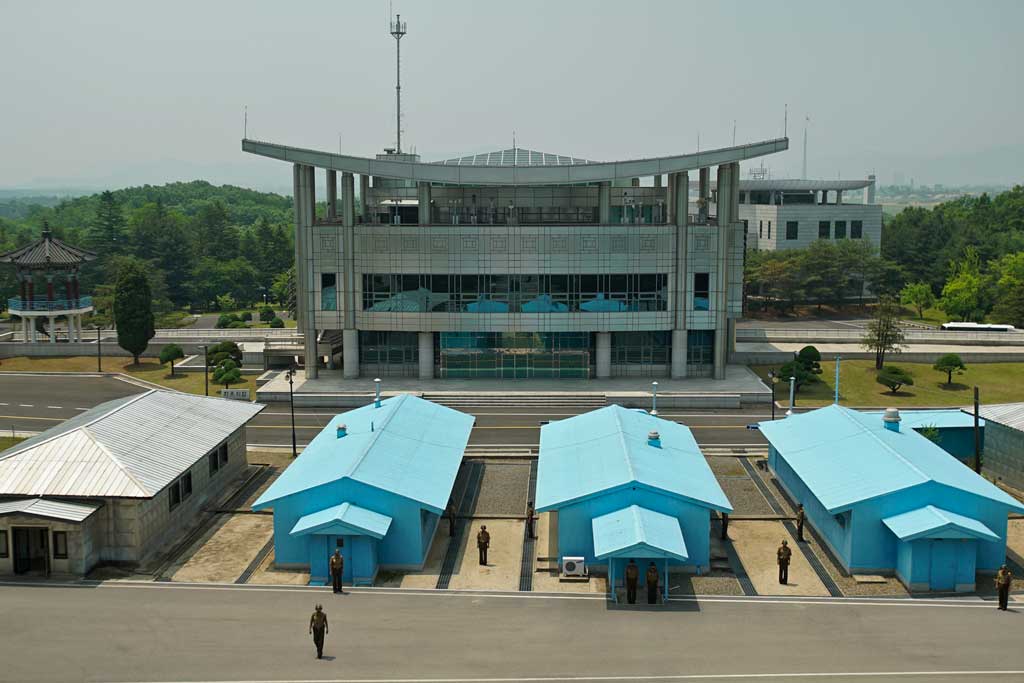
I am in what is probably the most intense gift shop in the world.
Postcards sold here carry slogans like “We will crush the US’ attempts for a nuclear war” and “To the US hardline we will counter with the ultra hardline”.
And you don’t even need to read Korean to understand what the posters sold here say. The symbolism — a giant fist crushing the US, an American being annihilated by his own missile — speaks volumes.
Inside this gift shop in the DMZ, postcards and posters carry slogans like "We will crush the US’ attempts for a nuclear war".
Welcome to the Korean Demilitarized Zone — the infamous DMZ, a place unlike any other in the world. This 160-mile strip separating North Korea from its southern neighbor is deceptively named. It is not demilitarized.
Both sides have hordes of soldiers manning this heavily-fortified border, weapons bristling at each other. This is one of the most dangerous flashpoints in the world, a reminder these countries are technically still at war.
We drive past deceptively quiet countryside — the earth here is riddled with landmines — and arrive in Panmunjom, one of the last, eerie relics of the Cold War.
I ask my guide, Lt. Col. Hwang Myong Jin, if the tension at the DMZ has heightened lately. He says it has, and blames the US’ “hostile policy” for raising the temperature.
I try to change the subject. The Lt. Col. is 36 — my age, but that’s where similarities end.
He likes basketball. I’m terrible at it. I love classic rock. His favorite song is North Korea’s “eternal revolutionary song”, praising Kim Jong Un.
Guide Lt. Col. Hwang Myong Jin, 36, talks about his favourite music with Will Ripley.
Despite a total lack of anything in common, we warm to each other and part as friends.
Tim, Justin and I drive back to Pyongyang. I have no idea what follows will be one of the most disturbing days we have ever had in North Korea.
It begins like every other Pyongyang morning. A haunting melody is played on loudspeakers at 5am; a citywide alarm clock to wake residents to a new day.
The music played in Pyongyang every morning commemorates the sacrifices of North Korea's leaders.
We go to the Pyongyang International Airport for the arrival of a VIP — possibly the only American who personally knows both Donald Trump and Kim Jong Un.
It’s NBA Hall of Famer Dennis Rodman, back in North Korea for another round of ‘basketball diplomacy’.
Rodman's strange relationship with North Korea goes back years. He once put on a basketball game for Kim Jong Un’s birthday, and has called Kim his “friend for life.”
Kim does not meet with Rodman on this trip, which has been sponsored by a company with ties to the marijuana industry.
NBA Hall of Famer Dennis Rodman, who personally knows Kim Jong Un, arrives at Pyongyang's International airport.
Distracted by the Rodman circus, we are completely unaware of the secret handover happening at the airport.
American college student Otto Warmbier is being quietly put on a US government plane, for what will turn out to be his final journey home.
Warmbier had gone to North Korea in late December 2015 on a private sightseeing tour, and was accused of trying to steal a propaganda poster from the wall of his hotel. The sentence for his attempted theft of the poster was 15 years in jail.
In March 2016, Warmbier mysteriously suffered severe brain damage and fell into a coma while in custody. His family believes he may have been tortured. North Korea denies it.
I report from Pyongyang on Warmbier’s heartbreaking return to the US, and it's one of the hardest reports I’ve ever had to give. I’d spoken to his parents just weeks earlier — they had no idea about their son’s condition then and thought he would come home and regale them with stories of how he charmed his captors.
Otto Warmbier would die six days after returning home in a vegetative state, at the age of 22.
CH 04.
Farms and fake news
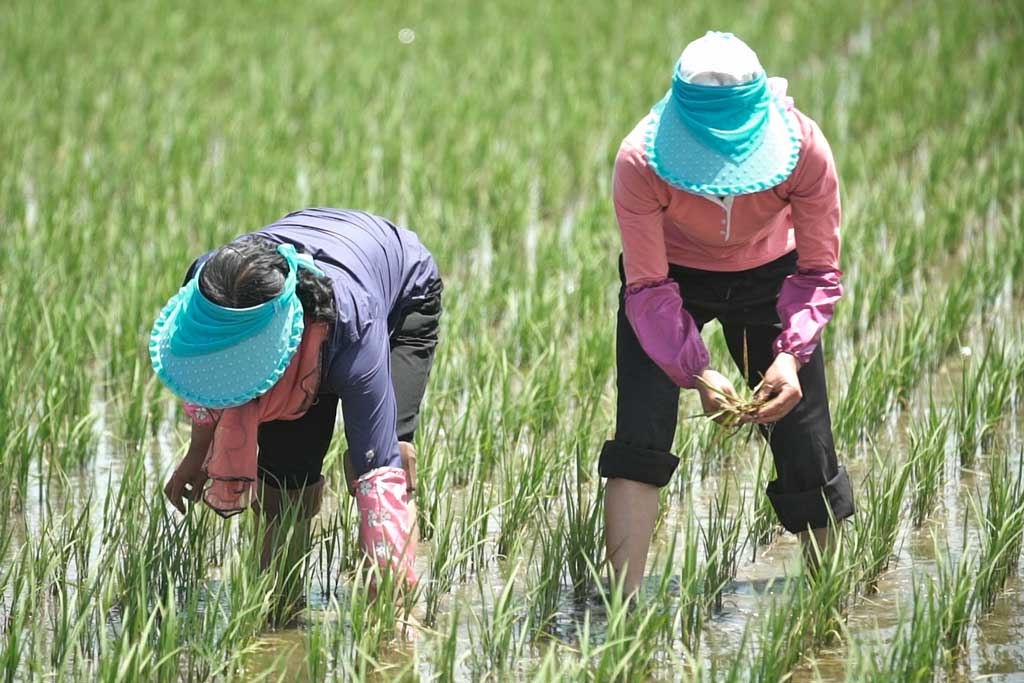
North Hwanghae province, about 40 miles south of Pyongyang, is a place of fields and farming villages.
There’s nothing sensitive here compared to Wonsan, the city in the shadow of North Korea’s weapons testing arena, or the tension-bathed DMZ.
North Hwanghae province, about 40 miles south of Pyongyang, is place of rice fields and farming villages.
So, why would getting permission to come here be so tough, and why would our minders constantly remind us to be careful when interviewing people here?
Because farming is one of the touchiest subjects in a nation still struggling to feed its people.
Mountains blanket most of the country, and there’s very little farmland. To make matters worse, North Korea is facing its worst drought in almost two decades.
For most people, beef, chicken or pork is an unaffordable luxury. Survival is dependent on a few basic staples: fermented cabbage — kimchi — and rice or porridge.
The fields are practically empty when we arrive and the handful of farmers left seem to be putting on a demonstration for our benefit. We speak to one of them, 38-year-old Yun Myong Gum.
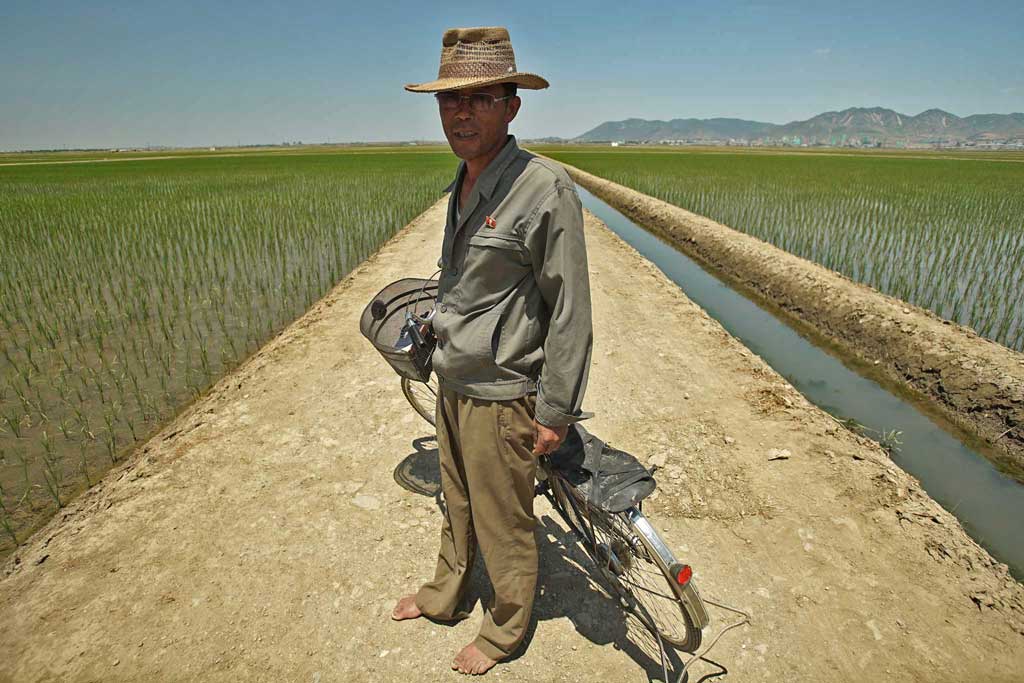
Her calloused, weathered palms bear witness to 10 years of hard work under the Korean sun. She’s philosophical about life, though.
“What kind of work isn’t tiring? The thing I am fond of is, for us farmers, it’s just taking care of the land.”
I ask her to name one place she would leave North Korea to go to. Her answer surprises me because no North Korean has ever told me this before.
“I want to visit the US,” she says, before the tears start welling in her eyes.
“I want to see how on earth [the] US looks to be harassing the Korean people so much. What grudge is there between Korea and the US? They invaded our country and massacred us. Why do you think we are suffering now? It’s all because of the Americans,” she says.
“I really curse the Americans and want to destroy their land.”
38-year-old farmer Yun Myong Gum, in rapid-fire Korean, speaks about her hatred for Americans.
The bitterness of her words as she tells me she wants to raze my home is incongruous on her smiling and friendly face. She grips my hand tightly and invites to me to come back and celebrate the harvest.
“We don’t think of American people badly; we just condemn its government,” she explains.
I ask our minders if I can visit her home. Maybe some other time, I’m told. Instead, they bring us to the home of a farmer who has been carefully selected for us.
The farmer and his wife share their lunch with us. Made from produce grown on their own front yard, it’s a meal of duck eggs, bean paste and rice, wrapped in lettuce with garlic and spices. Simple, healthy, delicious — washed down with homemade spirits that pack quite a kick.
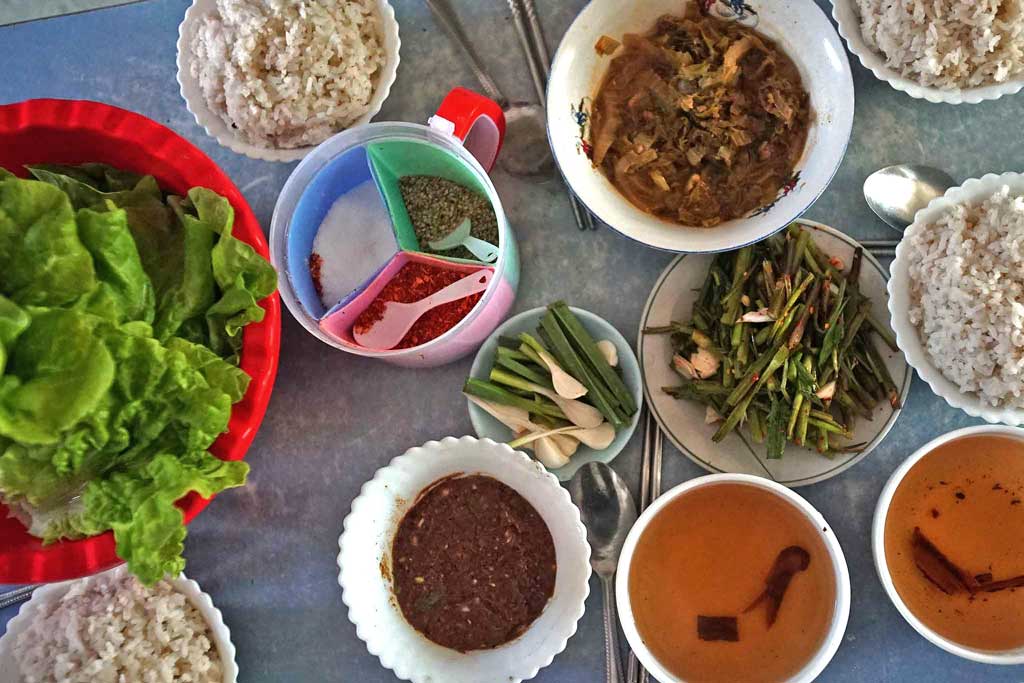
I ask my host, Kim Gyo Son, of the famine that hit the country in the 1990s, when hundreds of thousands — possibly millions — of people died of starvation.
“We ate tree bark after going up the mountain for food and wondered how long we’d have to do that,” he says.
Lunch is simple, healthy and delicious -- and accompanied by potent homemade spirits.
Kim tells us this isn’t a problem anymore thanks to his self-raised crops.
“We have rice and money to live off each year. This house as well, I got for free,” he says.
After lunch, Kim gives me a tour of his small, two-story house. It’s built of concrete, with a blue tin roof. There is a tidy vegetable garden and a small well in the front yard. The kitchen is small and simple, the rooms sparsely furnished.
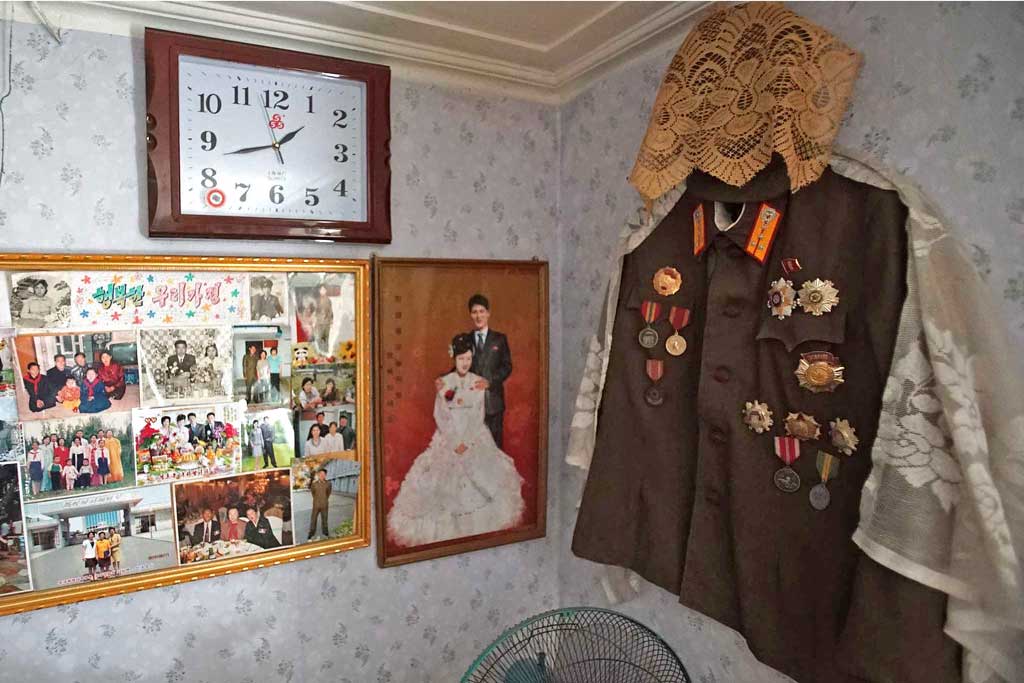
His living room has a DVD player and TV, on which Kim watches cooking and lifestyle shows, songs and movies. None come from the west, of course.
Like all North Korean homes, portraits of the late leaders hang prominently, including a photo of a surprise visit by the late General Kim Jong Il in 2006 — which is probably why this house was selected for us.
My host isn’t very different from many of his generation around the world — one of his favorite rituals is reading the newspaper.
I ask him what he knows about President Trump. He tells me he forms his opinions from the newspapers he reads.
“I think he is impulsive, and not calm. So, he’s losing the trust of the American people,” says Kim.
I say many people in my country are cynical about newspapers and TV news, and tell him about ‘fake news’.
For farmer Kim Gyo Son, reading the newspaper is a beloved ritual. He says he believes everything he reads in the paper.
He says because Rodong Sinmun, the state newspaper, is the voice of the party, he can’t even imagine it being fake news.
“So, you believe everything you read in the paper?” I ask.
“Yes, we believe it 100 percent,” he tells me.
Ask anybody in North Korea and they will say the same thing — no fake news here.
CH 05.
Smartphone shopping in Pyongyang
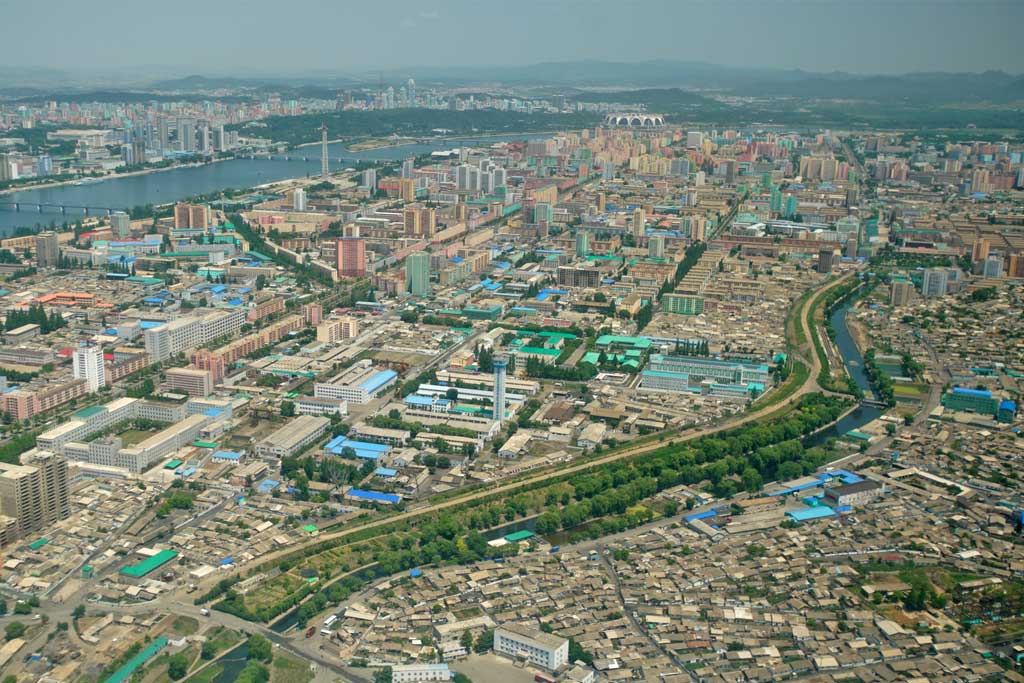
Pyongyang is the North Korea you see on the news.
The capital is the nation’s showpiece, home to the most trusted and privileged of its citizens. This is where the goose-stepping, chest-puffing displays of unity and might are perfectly executed by tens, if not hundreds, of thousands of people. It’s a hell of a show, one made possible by countless hours of mandatory practice.
Each Pyongyang morning, women wave flags to motivate the city’s 3 million residents to work harder.
It is also where each morning, women wave flags to motivate fellow citizens to work harder. Discipline, dedication and revolutionary fervor is expected if you’re one of the 3 million allowed to live in Pyongyang.
In recent years there’ve been a slew of ambitious new construction projects. Futuristic buildings and skyscrapers, all pet projects of Kim Jong Un.
On Ryomyong Street, we find North Korea’s version of the Apple Store. The brand, Arirang, is named for an iconic Korean folk song. The store manager tells us it's top-selling of the three North Korean cellphone makers.
She tells us Arirang is a well-known designer label here. It certainly has designer prices — upwards of $350. I ask her how people here afford it; she says living standards have gone up. We never get a clear explanation of how people actually afford this stuff.
While North Korea’s average income is between $1000 to $2000 a year, or about $3 to $5 a day, life is improving for Pyongyang’s growing consumer class. According to South Korea Central Bank estimates, the North Korean economy grew by almost four percent in 2016.
Perhaps that explains why we see so many people buying smartphones, tablets, hi-fi speakers and HDTVs.
North Korea's version of the Apple store is on Pyongyang's Ryomyong Street.
One customer is listening to music on her new phone and playing a game that looks an awful lot like Angry Birds.
She tells me she likes sharing photos with friends and taking selfies. We take some selfies together; the camera on her phone takes a more flattering picture than mine.
North Koreans can do most of the things we all do on our smartphones. What they can’t do, though, is connect to the Internet. What they have is a state-controlled intranet, completely monitored and censored.
I am told North Korea has its own version of Google, where searches show only government-sanctioned content. Ditto with social media — there is a North Korean equivalent to Facebook. The country also has chat rooms — think of AOL in the 1990s — and even online dating.
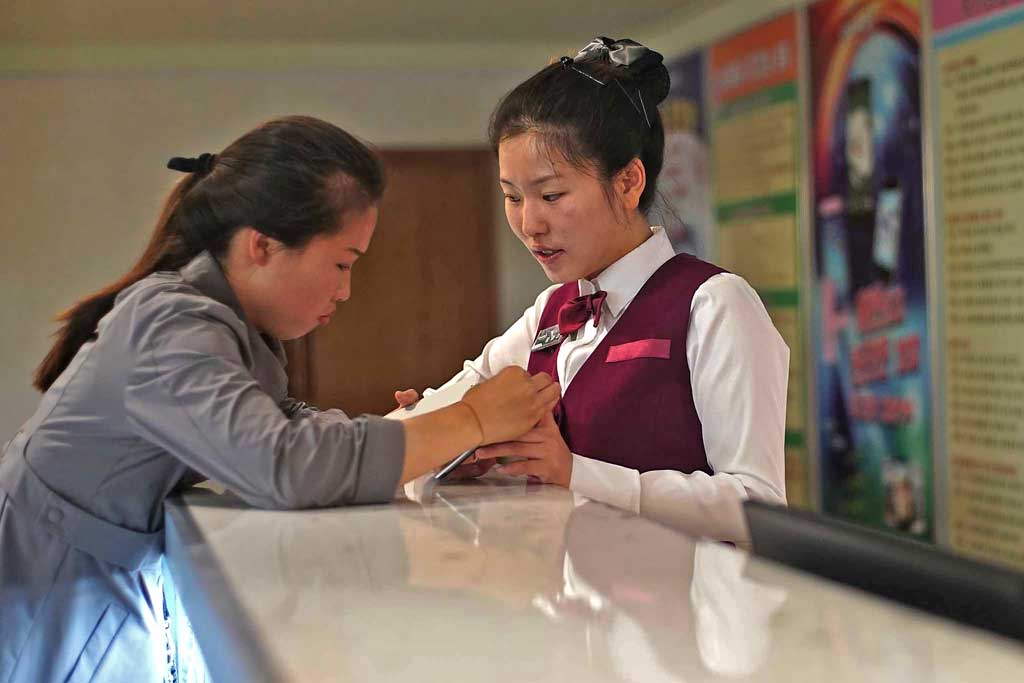
We ask to log on to these chat rooms, but are told by our government minders that it’s too difficult to arrange.
We later go to a department store and see people buying groceries. These are mostly North Korean products, like Taedonggang beer. But, despite international sanctions, there are also many imported Chinese brands on sale.
In the food court on the top floor, we see people piling their plates with all kinds of Korean food, as well as some American-style fast food.
We try milkshakes and French fries sold in red and yellow packaging that looks an awful lot like McDonald’s, minus the golden arch. They taste surprisingly good.
The improving economy means people have more ways to enjoy their rare time off. We visit a tomb and adjacent temple near the city, and overhear music and laughter in the woods.
A group of factory workers enjoys some time off with a party in the woods.
It’s a group of factory workers having a picnic and singing karaoke. They’re happy to share their food with us, and even happier to let their hair down.
We expect North Koreans to work hard. We never expected them to also party hard.
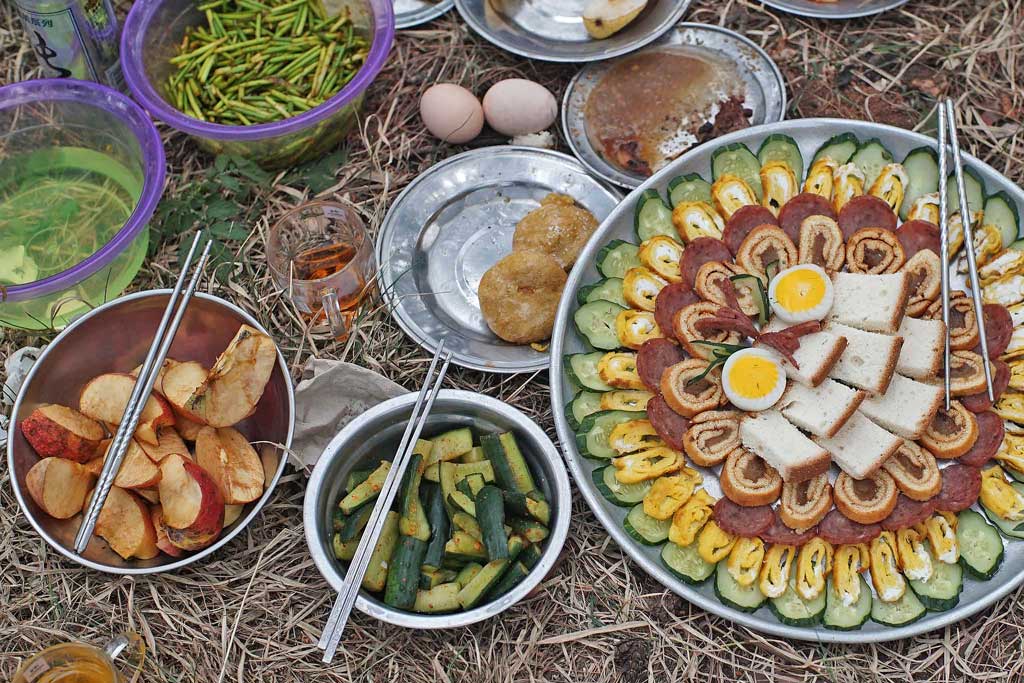
CH 06.
The sacred mountain
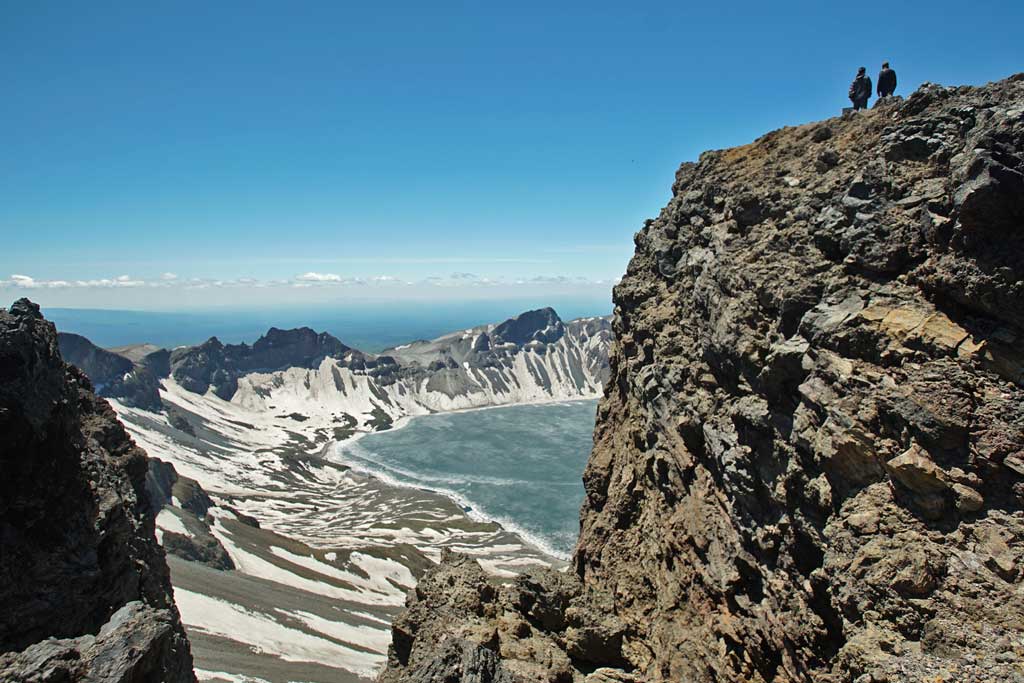
We take an Air Koryo flight to Samjiyon County, 400 miles north of Pyongyang, right on the Chinese border.
The plane we are on — a Russian-made Antonov AN-24 — has been flying for around 50 years, but its retro cabin is still pristine. The flight attendants are attractive young women who usually work from 18 to 25 and then go off to university or get married.
Samjiyon County isn’t far from where North Korea launched its second ICBM, in July.
But we’re not here for missiles.
We’re here for Mount Paektu, a still-active volcano that’s also the highest point on the Korean peninsula. Mount Paektu is sacred to North Koreans, as well as their neighbors to the south, who have not been able to visit in recent years due to heightened tensions.
North Korean society prizes racial purity and state propaganda glorifies the Kim family for their “Mount Paektu bloodline”, which is said to be a noble and heroic lineage tied to the ancient legendary kings of the Korean peninsula.
We drive for hours on dirt roads through the North Korean countryside. We have never been this deep inside rural North Korea; there’s a striking lack of paved roads and infrastructure here.
Heavy trucks and a construction site indicate at least some development underway. Our minders refuse to allow us to take pictures or even stop our van, and we only catch fleeting glances of groups marching by.
We eventually reach the county seat. The centerpiece of this sleepy town is yet another monument to the late president Kim Il Sung. We are shown a bullet-riddled building and told this is where he led a surprise attack against the Japanese.

We go down another, windy, road, and reach a site North Koreans consider sacred: the cabin where North Korea says Gen. Kim Jong Il was born. Our guide tells us the story of Kim’s supposedly mystical birth.
“It was really cold and the weather was not normal. But somehow on that day the strong wind stopped all of a sudden, the sun began shining through. Everything was bright and a quiet calm took over. The flowers bloomed and in the sky was a particularly bright star,” our guide tells us.
“Is that a legend or did it actually happen?” I ask.
She insists it actually happened.
This cabin is considered sacred by North Koreans. It’s where they say Gen. Kim Jong Il was born.
“It’s not a legend. Our General is really a person heaven sent us. So he changed the weather too. It’s a true story,” she says.
Remembering outside historians say Kim was actually born in Russia, I tell the guide people outside North Korea will wonder how the story can be true.
She says the General was so great, nature transformed itself to announce his birth to the world.
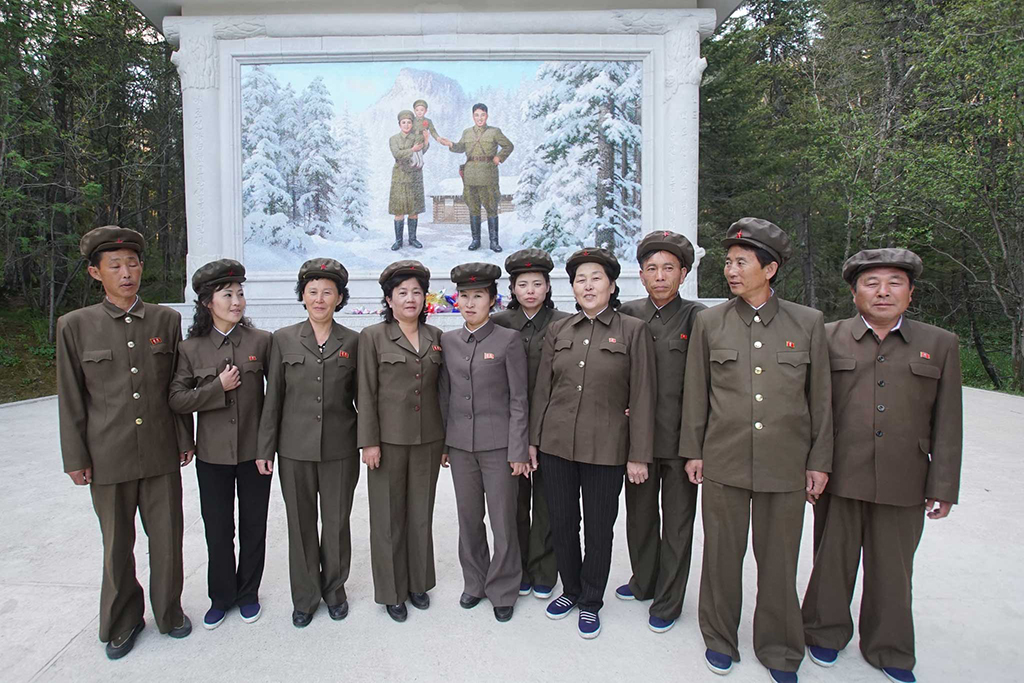
I realize for North Koreans, this is their faith. This is like their Bible, Quran or Torah. When they come to Mount Paektu, they’re making a pilgrimage.
We make our way closer to the mountain’s summit. Near the top, we see another symbol linking the Kims to this place — Kim Jong Il’s signature, carved into the flesh of the mountain.
Strong winds nearly knock us over as we approach the summit, but near the top the wind stops completely. The air is crisp and calm and I see one of the most breathtaking sights of my life: a caldera full of crystal blue water, frozen over, surrounded by sharp, snow-dusted peaks.
I understand why this place holds such deep emotional resonance for the people of this country.
This mountain symbolizes North Koreans’ lives — the struggle of a big, tough climb and the hope of a beautiful future.
A beautiful future — if they continue to swear undying loyalty to their leader.
